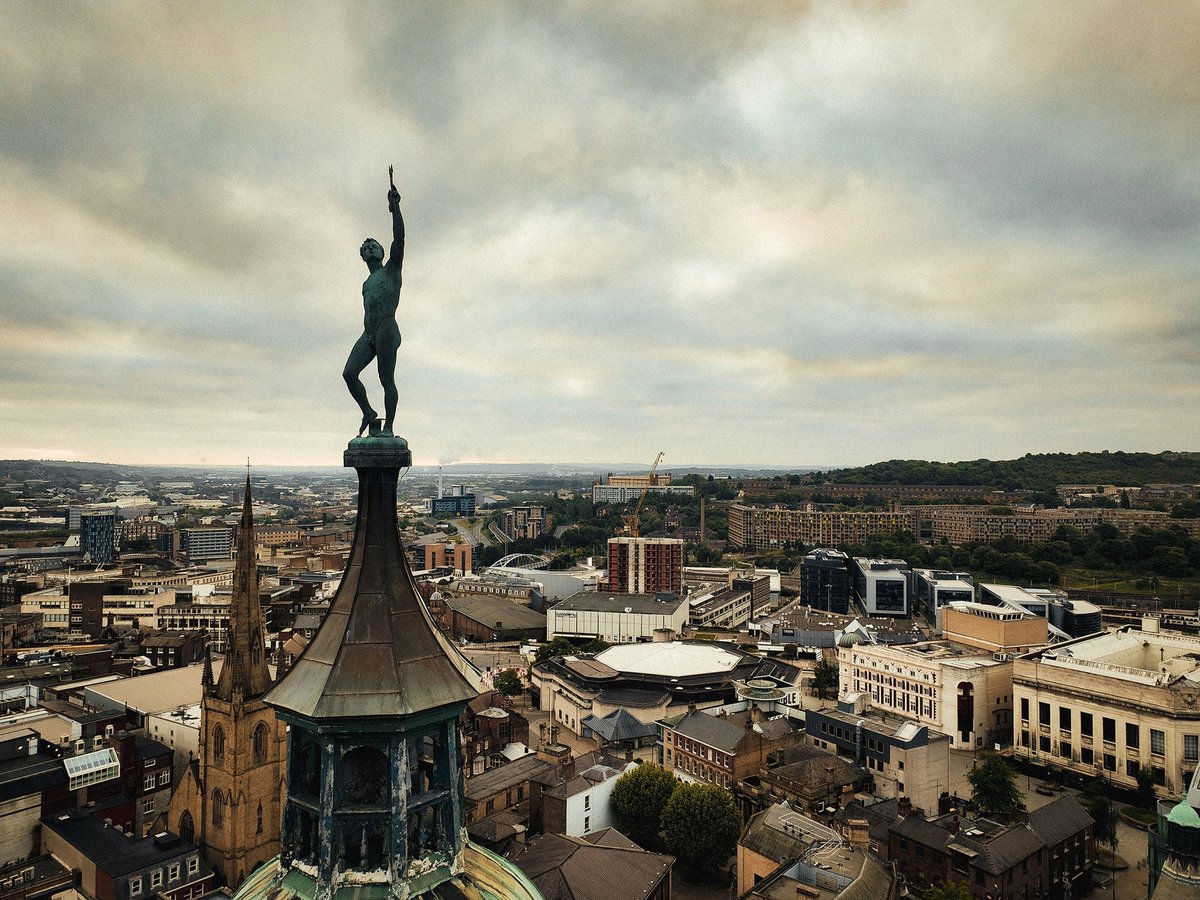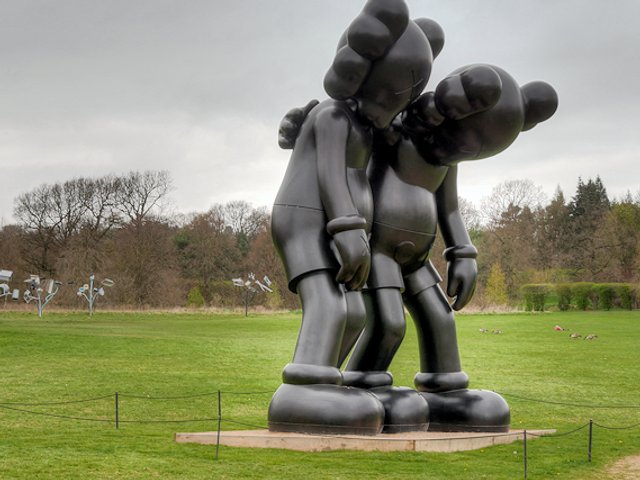From its perch atop Sheffield Town Hall, a seven-foot-high bronze sculpture of Vulcan has watched over the city for 128 years. The Roman god of fire and metalworkers is a fitting symbol for the city where industrial steelmaking was invented and which once produced 40% of all the steel made in Europe.
But with the decline of its heavy industry in the second half of the 20th century, Sheffield, with a current population of 550,000, is now turning to culture, heritage and the arts as a source of regeneration. In late 2021, the city council won £20m from the government’s Levelling Up Fund, a pot of money designed to tackle inequality in the UK’s more economically deprived areas.
The money is to be spent on three projects: £15.76m on the excavation of Sheffield’s medieval castle, £1.6m on a new music education centre called Harmony Works, and £2.64m on the transformation of the Grade II-listed former Yorkshire Bank Chambers into a new home for the arts organisation S1 Artspace. A further £27m has been raised from National Lottery funds, foundations and private sources to support Harmony Works and S1 Artspace, while the city council is providing land worth £2.4m for the castle project.
Sheffield’s investment in culture has not always achieved the desired results. The city’s ill-fated National Centre for Popular Music, a £15m museum that was largely funded by the National Lottery, opened in March 1999 but lasted only 15 months before closing. Its failure was attributed to high ticket prices and a threadbare visitor experience.
But the council expects the three new projects to benefit the city’s economy through increased footfall, a rise in visitor numbers and investment in previously unappealing parts of the city centre.
“Sheffield has an incredible history, full of invention, industry and culture,” says Ben Miskell, the chair of the council’s regeneration committee. “It is vital that we reflect this as part of the regeneration of our city, and we have that at the forefront of our plans.”
The post-steel decline of Sheffield’s economy was captured in the 1997 comedy film, The Full Monty, which tells the story of unemployed steelworkers performing a striptease act to make ends meet. Thousands of jobs were lost with the collapse of Sheffield’s steel industry, although the city’s factories, which are now largely automated, still produce specialist steels.
Today, the city’s two universities and a large government office are major employers. But Sheffield is also home to more than 2,000 cultural and creative businesses, providing around 9,000 jobs. The Arctic Monkeys, Pulp, Def Leppard, The Human League and Joe Cocker bear witness to a vibrant tradition of musical talent. The Harmony Works project aims to build on this, bringing the Sheffield Music Academy and Sheffield Music Hub together under one roof.
Sheffield Castle, the most important of the three projects, is scheduled for completion in early 2026. The site will include a public park featuring the newly exposed River Sheaf, which gives Sheffield its name and has flowed underground through a culvert in the city centre for the past century.
Abandoned
Castlegate, the castle district, was historically the retail and civic heart of the city. But those functions have moved away, along with the relocation of the central markets and the closure of several large department stores. With many neglected, often abandoned buildings, the area attracts drug addicts, drunks and antisocial behaviour. In 2022 an art gallery, Fronteer Gallery Sheffield, was forced to relocate to another part of the city due to what it described as “threatening behaviour”.
“Castlegate’s problems affect perceptions of the whole city and are immediately evident to visitors,” the council stated in its Levelling Up funding bid. “Addressing them and creating a sense of place and new cultural institutions will instil a sense of confidence and pride, creating a climate for new commercial investment.”
The restoration project will put part of the remains of the castle—the birthplace of the city—on public display for the first time in decades. Built in 1270, the castle was one of the largest in medieval England and held Mary Queen of Scots prisoner at various times. After it was demolished in the English Civil War, the site became an orchard, then a bowling green. A steelworks was built on it, then, in the 1920s, a shopping centre.
“To be able to put the tangible remains of the castle back on display is a big contribution to Sheffield’s shared identity,” says Ashley Tuck, the archaeologist overseeing the excavation. An outdoor events space is under construction on the site of the former bowling green.
The project has already caught the imagination of residents, Tuck says. “This is the largest excavation of a castle in modern times, and we’ve had a massive response from the general public. We had over 700 people on the waiting list for tours; the volunteer dig places booked up within minutes.”
The Sheffield-based painter Ryan Mosley is a trustee of S1 Artspace, which will take up its new home in the former bank building. Mosley studied at the Royal College of Art and has had solo exhibitions at Galerie Eiegen + Art in Leipzig and Berlin and at Alison Jacques Gallery in London. He says the new location will be transformative for the organisation, which mounts annual exhibitions and events and provides subsidised studio space for artists. “S1 Artspace has been looking for a permanent home for as long as I can remember,” he says.
The city’s new direction may seem a long way from the grimy forges to which the statue of Vulcan pays tribute. But as the god of craftmanship and artisans, he is perhaps a fitting figure to watch over Sheffield’s next chapter, too.






